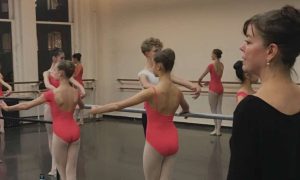Let’s talk about virtual auditions. They started as a necessity out of the pandemic, and thankfully served as a way to keep our industry moving throughout COVID. But as the virtual audition solidifies its spot in the industry, we haven’t stopped to consider that they aren’t a reasonable long-term solution — at least not in their current form. Mind you, the way we were casting shows before the pandemic (700-person lineups at 5am in midtown Manhattan, for example) was not the way to do things either. One of the great ingenuities of the pandemic has been electronic submissions, and they deserve their due. But we also have to take into account the work we’re asking dancers to manage on their end. So, here are some aspects of virtual auditions that need to be brainstormed.
#1. Cost
It’s cheaper for productions to run virtual auditions. But the financial burden hasn’t evaporated; it’s just been shifted to the performers (not to mention the organizational, technical and overall energetic costs). Dancers now have to book and pay for studio space — alongside all the other dancers in their city who are auditioning for the same show. Splitting costs by sharing space is difficult for fear of COVID. Once space is secured, dancers are their own camera person, lighting tech, sound tech and editor.
#2. Time frame
Getting all that done with little notice before the submission deadline is tough. Two days isn’t much time when you work a day job, especially when casting will only have the time and capacity to review a limited number of the first videos submitted.
#3. Space
Let’s be clear that studio space is a necessity for dancers. It’s much easier to be an actor or singer in the virtual world. You can find a blank wall anywhere – but if dancers want to put their best foot forward, they need space to move. One New York freelance dancer remarks, “If you’re interested in me, I’ll pay the money to rent a studio. But until I know I’m on your radar, I just can’t justify the cost.” Let’s not pretend that it’s possible to do your best work in the “living room” of your studio apartment. Space is a luxury.
#4. Expectations
Asking for callback-level material in first round submissions is an unfair expectation. Until they’re invited “in to the room,” dancers shouldn’t be asked to learn a minute or more of complex and fast-paced material, especially when there’s a possibility they’ll be typed-out without a glance at the dancing they spent hours learning. Start smaller, and save the rest for the second round.
#5. Volume
With hundreds of videos being submitted, casting won’t be able to get to them all. The poor people at casting deserve a more efficient system, too! Performers can tell how many views their audition video has gotten, and the number of times it’s been downloaded. Dancers know when casting didn’t have the time or resources to get to it, and it’s hard not to feel like they just didn’t bother.
Sheer volume isn’t an issue unique to virtual submissions, though. In 2019, Pearl Studios in NYC had to cap the number of dancers auditioning for the non-union tour of Hairspray because the number of people in the building became a fire code violation. In those kinds of crowds, of course casting couldn’t clearly see and calmly consider each artist. But dancers at least felt like they were in the room, in front of the choreographer, getting at least a semblance of a class and feedback. You know things are in need of fixing when dancers are missing the good old cattle call days. Says our anonymous freelancer, “I would rather line up at 5:30 in the morning, learn the combination in a crowd and get cut four hours later. That at least feels like I’m ‘doing the thing’ with my community. Me at 10pm in an expensive studio with my iPhone running out of storage does not feel like I’m ‘doing the thing.’” Live or virtual, there needs to be a better way to filter through submissions.
#6. Regulation
This brings us to a central question: whose responsibility is it to set and enforce dance industry standards? Equity and AGMA are the only governing bodies we have. They ensure adherence to industry expectations when it comes to shows, companies, rehearsals and dancers under contract. But before dancers land a show or company contract and sign on the line, they’re at the mercy of the production. As it stands, the audition process remains a wild west of increasingly crowded cattle calls. If unions were the ones to regulate the audition protocols of shows and companies under their jurisdiction, it would promote a level of protection for the dancers (union or not) who are at the mercy of those protocols.
#7. Solutions
So how can we improve the audition experience for everyone – dancers and casting alike? It’s not an easy task to give every dancer an opportunity to be seen without overwhelming a production’s casting team.
One option might be using a general dance reel for first round cuts. When auditions were live, typing rounds were a common occurrence. A dance reel round could act as a quick check to see if a dancer’s look, style and technique could be a match for the show. Maybe reels are limited to one minute in length so that casting can get through them all.
Different shows are looking for different qualities in their dancers, so having a versatile reel would be imperative in this scenario. And if dancers were finding that they weren’t getting called back based on the reel they’re providing, that in and of itself is good feedback to diversify or alter it. But much like a resume, a first round of dance reels could help casting narrow down the field, so that they can ask for more involved work (like learning intensive choreography) only of the dancers that they’re willing to consider.
Or maybe it’s a simpler solution, like limiting the number of counts of choreography that dancers are required to learn on first round submissions. Or maybe we need in-person timeslots divided by agency, with a capped number of open slots available for unsigned dancers to register for.
Any of these solutions could pose new problems. But the effort of evolving our industry and implementing systems that work for everyone is worth some attention and tailoring, and it’s something we need to address together.
By Holly LaRoche of Dance Informa.















